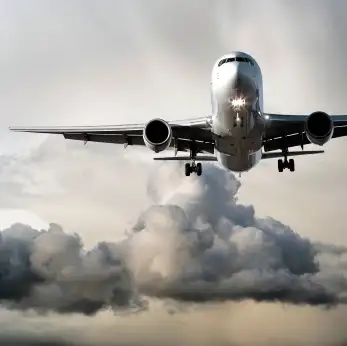
As scheduled, American and US Airways submitted to the court their responses to the Justice department’s antitrust complaint seeking to halt the two airlines’ merger.
In separate documents—American’s at 15 pages, US Airways’ at 50 pages—the airlines addressed and contested the DOJ’s anti-merger arguments point by point.
Key points:
- The merger would enhance competition—not, as the DOJ alleges, hinder it. “This merger will greatly enhance competition and provide immense benefits to the traveling public… Conservative estimates place the net benefits to consumers at more than $500 million annually.”
- Consolidation does not lead to anti-competitive pricing, because the low-cost carriers will keep the legacy carriers in check. “The demonstrable success of low-cost carriers is a market-driven response to consumer demand, but the complaint inexplicably ignores their profound and permanent effect on industry competition.”
- The two carriers need to merge in order to compete effectively against Delta and United. “Taken separately, each of US Airways and American is incomplete. American has a weaker presence for traffic moving up and down the East Coast, US Airways is weaker in the Midwest, and both are relatively weaker on the West Coast. Without geographically strategic hubs and efficient and convenient connections from those hubs, American and US Airways cannot effectively appeal to travelers going to or from, or traveling within, these critical regions, and they necessarily lose business to the more complete networks that Delta and United offer.”
- The carriers need to merge in order to remain financially viable. Responding to DOJ assertions that the two airlines are doing fine as stand-alone companies, they point to their longer-term financials: “The harsh reality is that over the last twelve years American lost $10.3 billion and US Airways lost $3.4 billion.”
- The DOJ’s case overall is weak. “Rather than considering how this merger will create robust competition in the future, or how blocking the merger will impede competitive forces, plaintiffs rely on rhetoric and innuendo. The Complaint makes broad, unsupported claims about past industry coordination and cobbles together out-of-context statements in an effort to suggest by anecdote what the plaintiffs cannot support with analysis.”
If no agreement between the DOJ and the airlines is reached in the interim, the trial is set to begin on November 25, and is expected to last for around 10 days. Other related events scheduled to take place in the run up to the trial’s start:
September 30 – Exchange preliminary witness list
September 30 – Parties’ joint submission due
October 1 – Status hearing
October 25 – Close of fact discovery
October 25 – Plaintiffs’ expert disclosure
October 30 – Final deadline for requests for admissions to be served
November 8 – Defendants’ expert disclosures
November 15 – Supplemental and/or rebuttal expert reports
November 20 – Close of expert discovery
Merger Cheat Sheet
- The new company would retain the “American Airlines” name and be based at American’s Ft. Worth headquarters.
- US Airways chief Doug Parker will be the new CEO. American chief Tom Horton will be named chairman of the new board and remain in that position until the spring of 2014 when the company’s first annual shareholder meeting will be held. When Horton departs the board, Parker will assume his position as chairman.
- American’s creditors would own around 72 percent of the new company; US Airways shareholders would get the rest.
- Based on 2012 results, the new company would have generated $38.7 billion in revenue.
- The merger is expected to generate around $1 billion in combined extra revenue and cost savings for the new company.
- The new company will be valued at around $11 billion.
- Combining the third- and fifth-largest U.S. carriers will create the world’s largest airline, in terms of passenger traffic.
- Prior to any post-merger rationalization, the two airlines will have around 120,000 employees, 950 planes, 6,500 daily flights, and eight major hubs (American: Dallas, Miami, Chicago, Los Angeles, New York; US Airways: Phoenix, Philadelphia, Charlotte). Although the carriers promise to maintain all current hubs, Phoenix and Philadelphia are likely to be downsized in the post-merger “rationalization.”
- The new American will be a member of the oneworld alliance, not the Star Alliance.
- The merger is subject to review and approval by U.S. regulators. That wasn’t expected to be a problem since there is relatively little overlap between the two airlines’ networks.
- The actual merger won’t happen overnight. United and Delta required five and seven months respectively to secure the necessary approvals for their mergers.
- It was 22 months after their merger closed before United and Continental finally merged their frequent flyer programs. Expect a similar post-close interval before American and US Airways consolidate their programs.
- Comparisons between American and US Airways’ current mileage programs are probably moot since there’s a high likelihood that an entirely new revenue-based program (like Southwest’s) will be introduced to replace both programs.
- After the merger, 83 percent of U.S. domestic air traffic will be in the hands of just four airlines (American 26 percent, United 19.3 percent, Delta 19.2 percent, Southwest 17.3 percent).
This article originally appeared on FrequentFlier.com.
You Might Also Like:
We hand-pick everything we recommend and select items through testing and reviews. Some products are sent to us free of charge with no incentive to offer a favorable review. We offer our unbiased opinions and do not accept compensation to review products. All items are in stock and prices are accurate at the time of publication. If you buy something through our links, we may earn a commission.
Related
Top Fares From Chicago, IL
Today's Top Travel Deals
Brought to you by ShermansTravel
Shop and Save with Country Inns...
Patricia Magaña
 Hotel & Lodging Deals
Hotel & Lodging Deals
$229 -- Chicago: Discounted Rates and...
Francesca Miele
 Hotel & Lodging Deals
$229+
Hotel & Lodging Deals
$229+
$188 -- Honolulu: Save on Oceanview...
Abigail Lamay
 Hotel & Lodging Deals
$188+
Hotel & Lodging Deals
$188+



